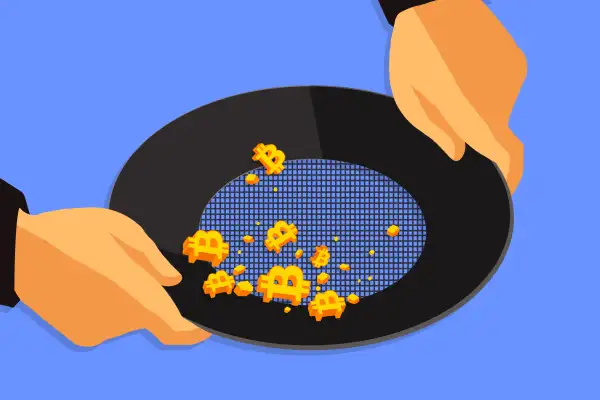Bitcoin, Meme Stocks and the Psychological Toll of Figuring out When to Sell
Money is not a client of any investment adviser featured on this page. The information provided on this page is for educational purposes only and is not intended as investment advice. Money does not offer advisory services.

Bitcoin hit another all-time high this week and everyday investors have been quickly winning (and losing) fortunes on stocks like GameStop and the meme-turned-cryptocurrency Dogecoin. These buys are risky, especially if you don’t know when to fold and walk away from the table.
The fear of missing out (FOMO) may have you wanting in on these investments, but it also keeps traders from getting out when they should. Say you hit the jackpot on $100 worth of Bitcoin you bought in 2011 and you’re sitting on more than $1 million. That’s likely more money than you’ve ever had, but what if you could have … $2 million. Sometimes taking a huge gamble works out; Mark Zuckerberg could have sold Facebook to Yahoo for $1 billion, but he didn’t and now he’s one of the richest people in the world. But we’re not all Mark Zuckerbergs and just as fast as those returns can double, they can also disappear. GameStop, which was trading at $483 per share at its highest in late January, is now trading around $50.
So how do you balance the fear of selling now and potentially missing bigger returns, with making sound investing decisions?
The psychology
If you’re a 100% rational human being, the answer may seem simple: you currently have more than you had when you started, so end the risk here and leave with your returns. But none of us are 100% rational, and the potential for your returns to skyrocket in a few weeks or months could, understandably, make it difficult for you to sell.
When an investor sees a gain in their trading account that they haven’t yet sold out of, they tend to take on more risk, says Dan Egan, managing director of behavioral finance and investing at robo-advisor Betterment. (If you actually sold those assets and saw the tax bomb, it may be a different story.)
And when investors start to see a loss, they’ll generally dig in to defend their positions, says Robert Frank, an economics professor at Cornell University.
“If someone goes to the racetrack and he’s behind going into the last race, he’s much more likely to bet on a long shot in the last race even though that’s not a smarter bet,” Frank says. “Betting on a long shot — if it wins — might enable him to avoid a loss.”
When someone has evidence they can make money this way once, they’ll wonder if they can do it again… and again… and again.
But novice investors need to ask themselves: am I actually good at trading, or am I just lucky? We hope for the former, but it’s best to plan for the latter.
What you should do
For every investor we see in the news making lots of money, there are tons on the other side who have lost lots of money — and next time, it could be you.
“When you get a windfall like that, you want to take the risk off the table,” says Anjali Jariwala, a certified financial planner and founder of Fit Advisors. “The best way to do so is to pull that money out in increments.”
If you put money in the market and that position has accelerated, at least pull out what you put in so you can recoup your investment, she says. If it continues to jump, consider selling half, so you’ve made money but you can still wait to see if there is more to gain. Of course, if you’re more risk averse, selling out once you’ve seen that price jump might be the best move for you (quit while you’re ahead, as they say).
If you’re starting out with self-directed trading, split your money into a “get rich” pot and a “stay rich” pot, Egan says. The “get rich” pot is a small amount of your wealth where you can do your experimenting in trading, and the rest should be in more risk-managed vehicles, like target-date funds. As your “get rich” pot inches up, rebalance and bring it back down to where it started.
If you’re actually good at trading, you can make money this way. But the rebalancing protects you in case you just got lucky once and you’re not actually that skilled, Egan says.
Keep in mind that experts recommend not having more than 2% in riskier investments like Bitcoin — 5% at the most.
It’s also a good idea to make a plan before you start trading. If you buy a stock at $100, for example, tell yourself that if it ever hits $200, you’re going to get out or at least take half of your winnings out, Egan says. And if this is a hobby, treat it like a hobby. Set yourself a budget like you would for the skiing or the rock climbing gym.
Finally, if you are one of the lucky ones who makes a lot of money quickly, don’t change up your lifestyle. If you make $100,000, spend just $10,000 more that year, Egan says.
“Having to downgrade from a Bentley to an Audi feels really bad,” he adds. “It feels a lot worse than it felt good on the way up.”
Can’t relate, but the point is that losses feel dramatically worse than gains.
More from Money:
Investors Who Made Money Trading Stocks or Bitcoin Are About to Be Hit With Capital Gains Taxes
Is Bitcoin a Safe Investment? What You Need to Know About Hackers, Ransomware and Market Volatility
